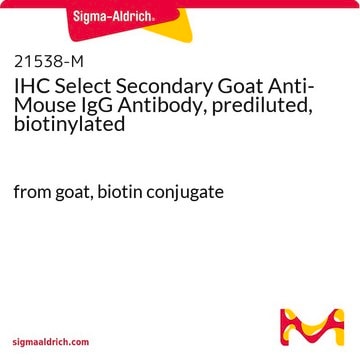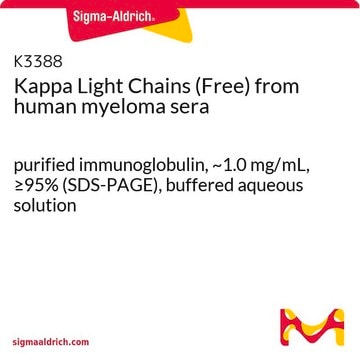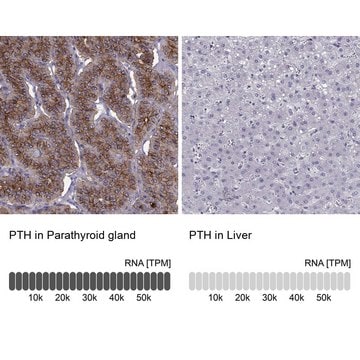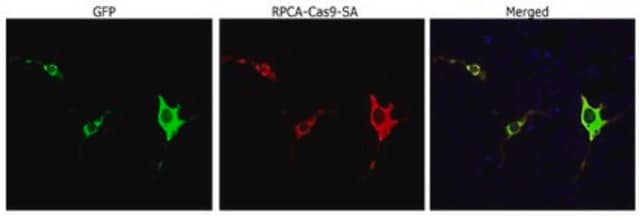17-10199
ChIPAb+ HDAC1 Antibody, rabbit polyclonal
from rabbit
About This Item
Produtos recomendados
fonte biológica
rabbit
Nível de qualidade
clone
polyclonal
reatividade de espécies
human
reatividade da espécie (prevista por homologia)
hamster (based on 100% sequence homology), canine (based on 100% sequence homology), mouse (based on 100% sequence homology), rat (based on 100% sequence homology)
fabricante/nome comercial
ChIPAb+
Upstate®
técnica(s)
ChIP: suitable
immunocytochemistry: suitable
western blot: suitable
nº de adesão NCBI
Condições de expedição
dry ice
Categorias relacionadas
Descrição geral
The ChIPAb+ HDAC1 polyclonal set includes the HDAC1 antibody, a Normal Rabbit IgG, and control primers which amplify a 88 bp region of ChIP Primers p21. The HDAC1 and negative controls are supplied in a scalable "per ChIP" reaction size and can be used to functionally validate the precipitation of HDAC1-associated chromatin.
Imunogênio
Aplicação
Representative lot data.
Sonicated chromatin prepared from untreated or UV treated (6 hrs, 50 joules/m2.) U2OS cells (3 X 10E6 cell equivalents per IP) was subjected to chromatin immunoprecipitation using using 2 µg of either Normal Rabbit IgG, or 2 µg of Anti-HDAC1 and the Magna ChIP® A Kit (Cat. # 17-610). Successful immunoprecipitation of HDAC1 associated DNA fragments was verified by qPCR using ChIP Primers, p21 . (Figure 2). Data is presented as percent input of each IP sample relative to input chromatin for each amplicon and ChIP sample as indicated.
Please refer to the EZ-Magna ChIP A (Cat. # 17-408) or EZ-ChIP (Cat. # 17-371) protocol for experimental details.
Western Blot Analysis:
Representative lot data.
0.5 µg/mL from a representative lot detected HDAC1 in HeLa cells. (Figure 3).
Immunofluorescence Analysis:
2 µg/mL from a representative lot detected HDAC1 in HeLa cells.
Epigenetics & Nuclear Function
Histones
Embalagem
Qualidade
Representative lot data.
Sonicated chromatin prepared from U2OS cells (3 X 10E6 cell equivalents per IP) were subjected to chromatin immunoprecipitation using 2 µg of either Normal Rabbit IgG, or 2 µg of Anti-HDAC1 and the Magna ChIP® A Kit (Cat. # 17-610). Successful immunoprecipitation of HDAC1 associated DNA fragments was verified by qPCR using ChIP Primers, p21 flanking an Sp1 binding site in the human p21 promoter (Figure 1).
Please refer to the EZ-Magna ChIP A (Cat. # 17-408) or EZ-ChIP (Cat. # 17-371) protocol for experimental details.
Descrição-alvo
forma física
Concentration: 0.7 mg/mL
Normal Rabbit IgG. One vial containing 125 µg of rabbit IgG in 125 µL of storage buffer containing 0.05% sodium azide. Store at -20°C.
ChIP Primers p21. One vial containing 75 μL of 5 μM of each primer specific for a region of the human p21 (WAF1/CIP1/CDKN1A) promoter. Store at -20°C.
FOR: CCC ACA GCA GAG GAG AAA GAA
REV: CTG GAA ATC TCT GCC CAG ACA
Armazenamento e estabilidade
Note: Variability in freezer temperatures below -20°C may cause glycerol containing solutions to become frozen during storage.
Nota de análise
Includes normal rabbit IgG and primers specific for human p21.
Outras notas
Informações legais
Exoneração de responsabilidade
Código de classe de armazenamento
12 - Non Combustible Liquids
Ponto de fulgor (°F)
Not applicable
Ponto de fulgor (°C)
Not applicable
Certificados de análise (COA)
Busque Certificados de análise (COA) digitando o Número do Lote do produto. Os números de lote e remessa podem ser encontrados no rótulo de um produto após a palavra “Lot” ou “Batch”.
Já possui este produto?
Encontre a documentação dos produtos que você adquiriu recentemente na biblioteca de documentos.
Active Filters
Nossa equipe de cientistas tem experiência em todas as áreas de pesquisa, incluindo Life Sciences, ciência de materiais, síntese química, cromatografia, química analítica e muitas outras.
Entre em contato com a assistência técnica







